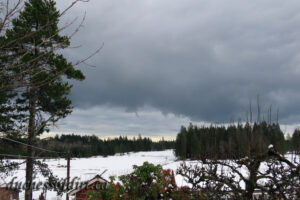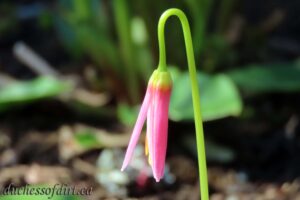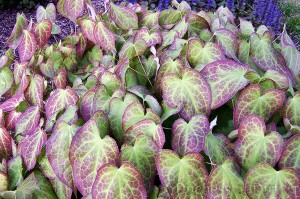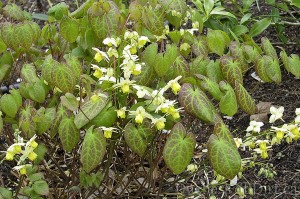Word of the Week
by Leslie Cox; Monday; April 7, 2025
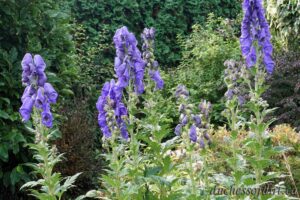 The word I selected this week is carmichaelii, (pronounced car-mih-KEE-lee-eye), mainly because I wrote out a bunch of name labels for some Aconitum carmichaelii ‘Arendsii’ plant divisions I potted up recently.
The word I selected this week is carmichaelii, (pronounced car-mih-KEE-lee-eye), mainly because I wrote out a bunch of name labels for some Aconitum carmichaelii ‘Arendsii’ plant divisions I potted up recently.
The name for this particular species of Aconitum is in honour of the English medical doctor and plant collector, Dr. John R. Carmichael (d. 1877), who discovered the plant in central China.
The ‘Arendsii’ in this plant’s name points to it being the result of a cross between Aconitum carmichaelii and Aconitum carmichaelii var. wilsonii.
Aconitum carmichaelii ‘Arendsii’ is also referred to as Arendsii Group because there can be some variability in the plants. But many may know this plant by one of its common names: Carmichael’s monkshood, Chinese aconite or Chinese wolfsbane.
(Note: This beautiful grouping of Aconitum carmichaelii ‘Arendsii’ was photographed on October 1st in our garden.)
Quote of the Week
by Leslie Cox; Sunday; April 6, 2025
Seeds of faith are always within us.
Sometimes it takes a crisis to nourish and encourage their growth.
~ Susan L. Taylor
There is a storm brewing across our planet thanks to our neighbour to the south of us.
Keeping faith in the strength and resilience of our great country, Canada, will prevail. I have no doubt.
We have survived in the past; we will once again.
Foto Friday
Two plant IDs updated
by Leslie Cox; Wednesday; April 2, 2025
Two more plant IDs have been updated in the new format. You will find them under Plants We Grow or click on their names below for quick access.
